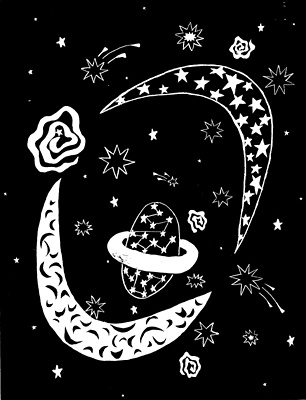All Nonfiction
- Bullying
- Books
- Academic
- Author Interviews
- Celebrity interviews
- College Articles
- College Essays
- Educator of the Year
- Heroes
- Interviews
- Memoir
- Personal Experience
- Sports
- Travel & Culture
All Opinions
- Bullying
- Current Events / Politics
- Discrimination
- Drugs / Alcohol / Smoking
- Entertainment / Celebrities
- Environment
- Love / Relationships
- Movies / Music / TV
- Pop Culture / Trends
- School / College
- Social Issues / Civics
- Spirituality / Religion
- Sports / Hobbies
All Hot Topics
- Bullying
- Community Service
- Environment
- Health
- Letters to the Editor
- Pride & Prejudice
- What Matters
- Back
Summer Guide
- Program Links
- Program Reviews
- Back
College Guide
- College Links
- College Reviews
- College Essays
- College Articles
- Back
Star Wars: The Last Jedi MAG
Legend. Legacy.
Since 1977, a self-starting, strap-hanging audience has ventured into a galaxy far, far away to learn that the making of legends and legacies is inextricable with the making of heroes. “The Last Jedi,” the eighth episode of the Star Wars saga, subverts this paradigm at the interface of light and darkness. The ideas of legend and legacy, resting on the assumption of grandiosity, are alternatively less aspirational than they are a great albatross on the soul.
“The Last Jedi” begins with all the familiar fanfare: high-flying battle, chromatic explosions, and white-knuckled suspense, replete with comedic jabs between opposing forces and moving displays of valor. Amid the omnipresent veracities of warfare, the film resumes where its precedent “The Force Awakens” left off. Daisy Ridley’s Rey journeys to the island of Ahch-To in the hopes of finding Mark Hamill’s Luke Skywalker, while the insidious First Order depletes Resistance forces under the leadership of Supreme Leader Snoke (Andy Serkis) and his underlings Kylo Ren (Adam Driver) and General Armitage Hux (Domhnall Gleeson). In the process, The Last Jedi offers a compelling purview of ambiguity and heroism.
To me, the most striking aspect of this film was the dynamic between Rey and Kylo Ren. From a storytelling perspective, the analogs between the two character arcs was appreciably bold, complementing each other as surely as Dark meets Light. The true onus for both characters is their lineage; while Rey’s uncertain origins and Kylo’s mighty Skywalker blood put them at antipodes within this narrative, their destinies remain intriguingly linked. The ensuing tension and drama is a confectionery cinematic delight, Driver’s poignant performance bringing forth a character that is conflicted and human at the essence.
Returning to the character of Luke addresses its own complicated history with iconoclasm. The biggest takeaway is the realization that people cannot be legends, only relics. The hermetic Luke Skywalker imputes legends to a bathetic and impressionable confidence in one’s own righteousness, which, at the day of reckoning, will become one’s foil.
It’s notable that, whether the characters are new or old, women are being increasingly centered in Star Wars:
Carrie Fisher shines in her final performance of the inimitable General Leia Organa, whose grit and screwball sparkle will be missed in the series’ ninth installment.
Ridley’s portrayal of Rey certainly does not disappoint, embodying her resilience and vulnerability with equal parts spunk and compassion.
Newcomer Kelly Marie Tran, the first Vietnamese-American woman to play a leading role in Star Wars, plays a tough yet incurably sweet Rose Tico, a maintenance worker for the Resistance who memorably brings a moral imperative into focus.
As one of my favorite new characters, Laura Dern’s Vice Admiral Amilyn Holdo becomes the lilac-haired hero we did not know we needed.
To say nothing of this representation, “The Last Jedi” also harnesses the elusive female gaze. While the Star Wars franchise was revolutionary in its own right, it has a tenuous history with diversity, in that a preponderance of its characters were male. The creation of diverse and compelling storylines for its female characters is relatively new, even for the character of Leia, whose famous slave bikini in “Return of the Jedi” was the wonted byproduct of the male gaze. In contrast, “The Last Jedi” uses its counterpart of the female gaze to create a remarkable presence in the emotion, in the story, and in the characters. Not only does this remove women as objects by making them subjects, bodies are used to display emotion and to create an awareness of the protagonists. The presence of the female gaze can be seen in the depiction of women’s clothing. Rey, an athletic young woman, wears the comfortable and unfussy garments from “The Force Awakens”; Rose is canonically seen in her functional uniforms, and even Holdo’s dress is stretchy and conservative. The power of women’s narratives in “The Last Jedi” is formed around the emotion and value they bring to the story, and that is rebellious indeed.
“Star Wars: The Last Jedi” is the most intelligent and self-aware film in the franchise. While its themes are not for beginners, the film is rife with mythology and symbolism that can be appreciated by all.
Godspeed, rebels.


6 articles 0 photos 4 comments
Favorite Quote:
Be thankful for what you have; you'll end up having more. If you concentrate on what you don't have, you will never, ever have enough. -Oprah Winfrey